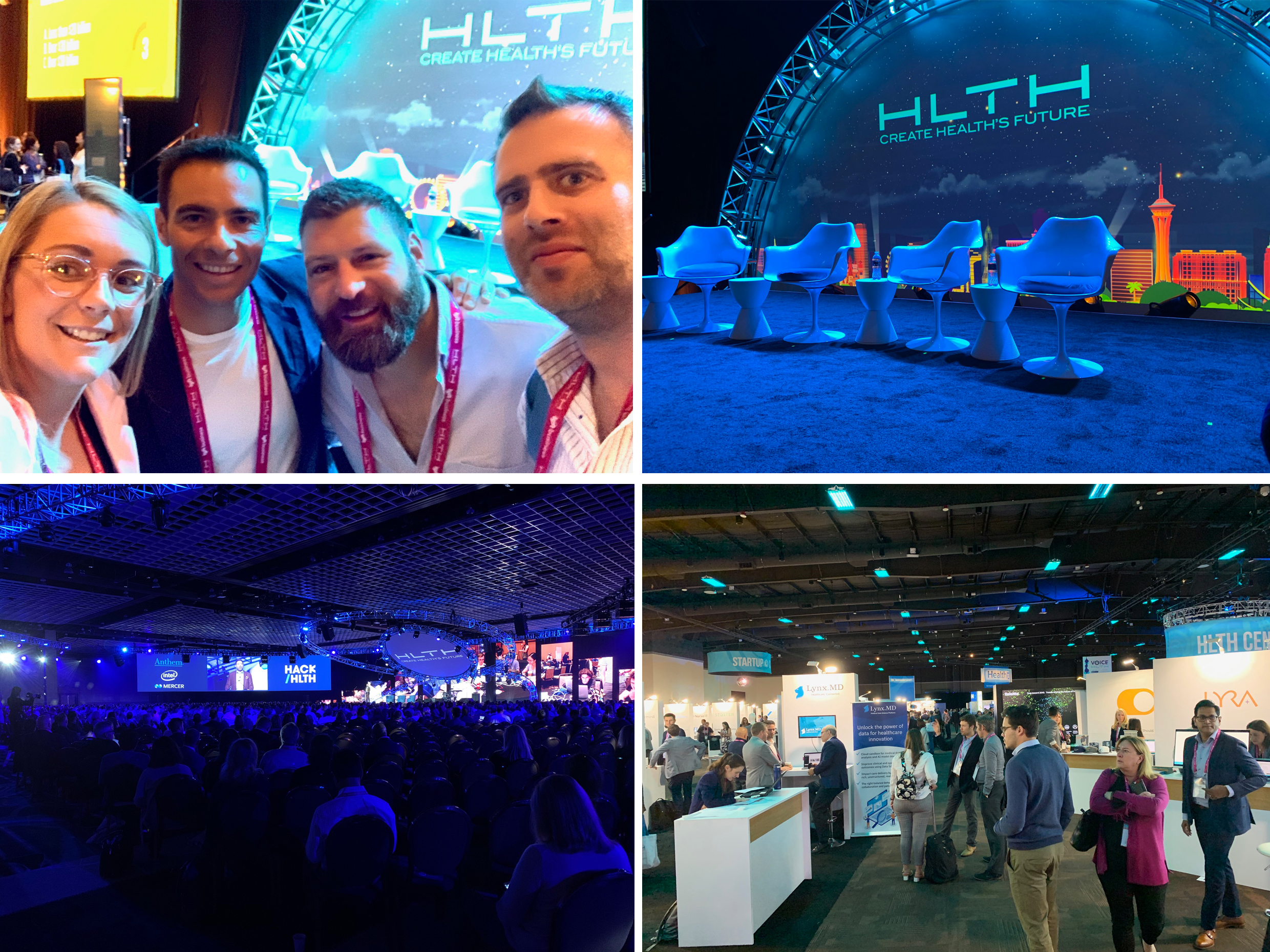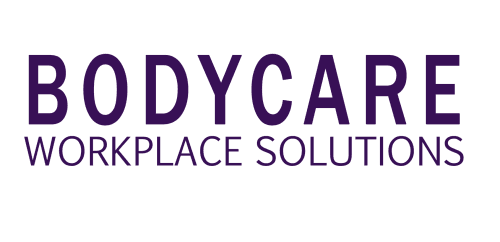HLTH Tech 2019 – The Future is Now…

A message from the CEO:
It’s an exciting time to be working in the health space. Access to health is at the tip of everybody’s fingers and at the forefront of everyone’s minds. Electronic health records are here to stay and whether we like it or not, individuals have more access to real time health information than ever before. Breakthroughs in research are occurring every other day and advances in technology are creating more efficient and precision-like treatments for injuries and illnesses. Did I mention it’s an exciting time to work in the health space?
Recently I was part of a delegation of organisations that went over to the United States of America to attend the HLTH Tech Conference. HLTH, pronounced “health” is one of the largest events of its kind around the globe. 7,000+ attendees, 300+ speakers and 1,000’s of CEO’s and Founders yearning to be immersed in cutting edge medical and health technology whilst being surrounded by the latest gadgetry to hit the industry.
From AI accelerating the drug discovery process, to genomics and managing the patient data debate – this conference had it all.
So, below I have listed some of my learnings from the conference along with how I think we can apply them within the occupational health arena.
- Human Centred Care
The term ‘patient’ and ‘patient centred care’ was at the core of almost every session, discussion and debate. There is now a significant focus on using technology to improved patient experiences and provide personalised healthcare solutions with the overall aim of achieving better health outcomes.
While patient centred care is certainly not a new concept, the notion of ‘Human-centric care’ caught my attention. The Bodycare brand is synonymous with the world of prevention: prevention of injuries, illnesses and working in the lead space to prevent people becoming patients, full stop!!
Human-centred care, is closely entwined with the notion of personalised healthcare which was another key theme throughout the conference.
My view is that personalisation has become the norm in society across so many aspects of our day to day lives. From how we watch Netflix to what we see in our Instagram and Twitter feeds. These mediums have changed the way we absorb information and have set the benchmark when it comes to customisation and personalisation. So, it is only logical to suggest that people now have an expectation that their healthcare – be it private, public or workplace has the same level of customisation.
As such in any kind of healthcare setting,
- We need to stop talking about people as patients and start thinking about them as human beings. Let’s shift our optics so that we are focused on actually preventing people from becoming patients by employing the use of technology and better health monitoring.
- Health programs must be tailored on an individual basis in order to get results. Whether it’s a rehabilitation program, a work hardening program, a first aid course – it doesn’t matter – if it’s not customised then you are taking a gamble (appropriate because the conference was in Vegas), as it’s highly likely that uptake will be poor.
- Humans are born to be social animals who thrive in community settings. So, while technology is important, don’t discount the importance of face to face interactions, especially in the health sector.
- Health Apps & Wearable Technology
Instead of duking it out to see who is number one, it’s high time that these 2 behemoths share the podium together. Apps may be old school but they have revolutionised the way we run our lives. From banking to social media to games and viewing sport – Apps have woven their way into the fabric of our connected community.
On the other hand, wearables are now one of the fastest growth corridors in the health tech sector. The crazy thing is the speed at which they are now evolving. In a few short years, we have seen the wearable market go from cumbersome and multi-based sensors that cover almost an entire limb, to single sensor pads that are smaller than a 50 cent piece (and weigh not much more). The best part is the depth, volume and accuracy of the health data they collect.
So, doubling down on the notion of a customised healthcare experience, a challenge that many organisations may need to contend with is how to create commercial and scalable programs that still tick the personalisation box.
With a large portion of the working population having access to a smartphone, it makes sense that smartphones are going to play a major role within the health space moving forward. From medication reminders, fertility tracking, using face scanning technology to determine health related illnesses and activity trackers, apps will enable personalisation. But it’s the compliment of wearable technology that will make the personalisation even more specific and targeted.
My thoughts around these points and how they will impact the blue collar workforce are as follows:
- It’s time to consider using app based technology to improve the health (and safety) of your workforce. Push notifications will change the way we communicate with our workforce. Think about it, how good would it be to be able to send small health bites or safety reminders to your employees, or send a notification every 2 hours to promote movement or remind individuals to perform certain things like rotating job tasks? The possibilities really are endless.Better still, how amazing could it be if workers were actually wearing infinitesimally small gadgets that could monitor their health biometrics and then, via an app, could communicate with the worker (or their team leader) that the worker is at risk of an injury? Think of the cost savings to the company and the improvements to workers lives if they didn’t actually work until they break down? (Note: this may not be possible in certain safety critical environments).
And while we are on the topic, I just want to take a moment to shine the spotlight on the applications for health and wearable technology on users of telehealth. We all know that Australia is a vast country with a proportion of our population living in rural and remote areas where access to health services is not nearly as easy as it is in the city. In its current format telehealth is often utilised through web-based browsers. By creating a link between wearable gadgets, app based technology and using a 5G network, we may be able to reduce the barriers for workers to access healthcare services and systems.
What I am trying to say here is that there is a real opportunity now for us to start thinking about how we can incorporate telehealth, apps and wearable tech into our occupational health, safety and wellbeing programs.
- It’s in the data
Privacy, security and data ownership are the hottest topics right now within the health space and the patient data debate is alive and well. Questions like who owns the data? Who has the right to access your data? Do patients (or humans) have the ability to manage their own health information and if so to what level? There are so many theories about what is ethical, moral and so many questions that are constantly being debated…but are yet to be answered.
On this somewhat divisive subject, I feel that the general message is:
- Transparency is key. If health data is being collected, there must be complete transparency between the health professional, the employer and the individual. At the end of the day, employees have the right to access their individual health data and to know how that data is being used.
- Privacy is paramount and a complete non negotiable. Within the occupational health space, we have seen it over and over again, employee health is often treated and handled in a completely different manner to that of personal health data. Ask yourself this, who actually needs access to the information and for what purpose?
- Lastly, the security of employee health information in the occupational health space has become a topic of conversation amongst industry leaders. In the last year or two, organisations have started to take this much more seriously and have begun to actually enforce their policies around employee health data and security. Things like data access rules and strict permission systems are now becoming the norm.
- Artificial Intelligence… the buzzword of the conference
If the word ‘patient’ wasn’t the buzz word of the conference then Artificial Intelligence definitely was. EVERYONE was talking about AI and predictive analytics.
Interestingly, when my colleagues and I tried to delve deeper into what exhibitors actually meant when they said their program/app/platform/piece of technology had AI, we received a very mixed bag of responses. Some just waffled, some got very technical and some even resorted to phoning a friend.
Our overwhelming feeling is that a lot of organisations are still grappling with the concept of true artificial intelligence and how it can actually be utilised to create efficiencies and improved outcomes.
My takeaways on the AI front, are that some health tech providers are still struggling with understanding the difference between trend analysis and AI. AI is self learning and with increased amounts of data and time the system is able to provide more accurate outcomes and predictions. To implement AI in a technology platform is an expensive exercise and most of the platforms hitting the market today are still utilising rules and trends over AI.
- Collaboration is key
We’ve all heard it before, but it still rings true. Collaboration is key. Collaboration between research institutions, government agencies, manufacturers, consumers and healthcare providers IS the way of the future and was a very topical concept that featured in many presentations and panel discussions.
Many of the panel experts shared their belief that if we work together, we will be able to accelerate the product development lifecycle and get better healthcare outcomes across the board.
How this reflects and impacts on the occupational health space is more or less the same. As specialists in all things injury prevention and occupational health, we need to look for ways to be more collaborative with our clients and other partners. We need to work hard to remove the customer/provider barrier and come together to create a relationship that actively works towards creating desired outcomes for the people most at risk – the workforce.
In Summary
Health tech is a super exciting, fast moving space to be working in. The HLTH Tech conference confirmed that the industry is advancing at a rapid rate and that the billions of dollars that are being invested are all in the name of creating healthier humans and communities.



